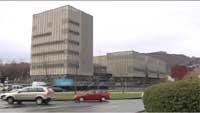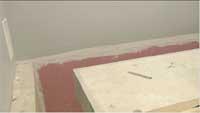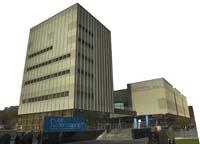CIC nanoGune: the biggest challenge of the smallest
2009/01/30 Lakar Iraizoz, Oihane - Elhuyar Zientzia | Urruzola Arrate, Manex - Elhuyar Zientziaren Komunikazioa

The CICnanoGune research centre is located on the university campus of San Sebastian. This building will investigate the smallest components of the matter and coordinate nanotechnology research in the Basque Country.
They say Nanotechnology XXI. The technological revolution of the 20th century. One might think that its only difference from conventional technology is size, which leaves visible components at first glance and works with the sizes of atoms and molecules.
But it really has little similarity to traditional technology. As the director general of the CIC nanoGune, José María Pitark, points out, "going down to the nano scale is not just a matter of miniaturization. The properties of matter change on this scale and this new framework opens new doors to basic research, a new world opens."
Basic science
Pitarke explained that nanoGune CIC does not work with specific applications. "We generate knowledge. We don't know where that generated knowledge will take us; that's the research." However, in order for the research not to remain in a mere research, they intend to collaborate with the industry and bring them the results obtained.

Five research groups are currently working, each of them in one field: the nanomagnetism group develops electronic nanodevices, the nanooptics group focuses on optoelectronics, optical microscopy instrumentation, etc., the self-assembly group works on the synthesis and functions of nanostructures, the nanobiotechnology group studies biopuntional nanostructures and the nanodevice manufacturing group handles different nanostructures.
To address all these issues they have international researchers of great experience. As Pitark says, "in the most advanced countries in the world these kinds of centers and initiatives are being set in motion. And if we don't want to stay behind, we have to be there."
The truth is that you cannot predict whether nanotechnology research will be a revolution. However, they say it is the area of action with the greatest growth potential. We have already begun to see in our environment clothes that change color and do not stain, creams that really remove wrinkles of the face, more selective drugs and with less side effects, etc. All of them are based on nanotechnology.
Special features building
A building for nanotechnology research cannot be of any kind, it needs very demanding technical requirements. To ensure the work of scientists, it is essential to ensure adequate environmental conditions and avoid any vibration, electromagnetic interference, noise or external dirt.

And so the building has been designed. The laboratories have been located in the basement of a building of six floors, on a concrete slab of meter and a half thick and 1,500 square meters of surface. The slab rests on several piles whose geometric arrangement guarantees the avoidance of vibrations. Doors and walls between rooms have also been designed to prevent acoustic and electromagnetic interference. In addition, to conduct a series of investigations, they must fully control impurities, temperature, humidity and pressure.
Several international companies have been consulted to learn how and where to build. Among other things, they have helped to determine the location of the building and to determine the location of the facilities inside it, so that the vibrations, electromagnetic radiations and other alterations produced by the usual activities (elevators, entrance and exit of trucks, laboratory equipment, etc.) do not affect highly sensitive equipment.

Gai honi buruzko eduki gehiago
Elhuyarrek garatutako teknologia





